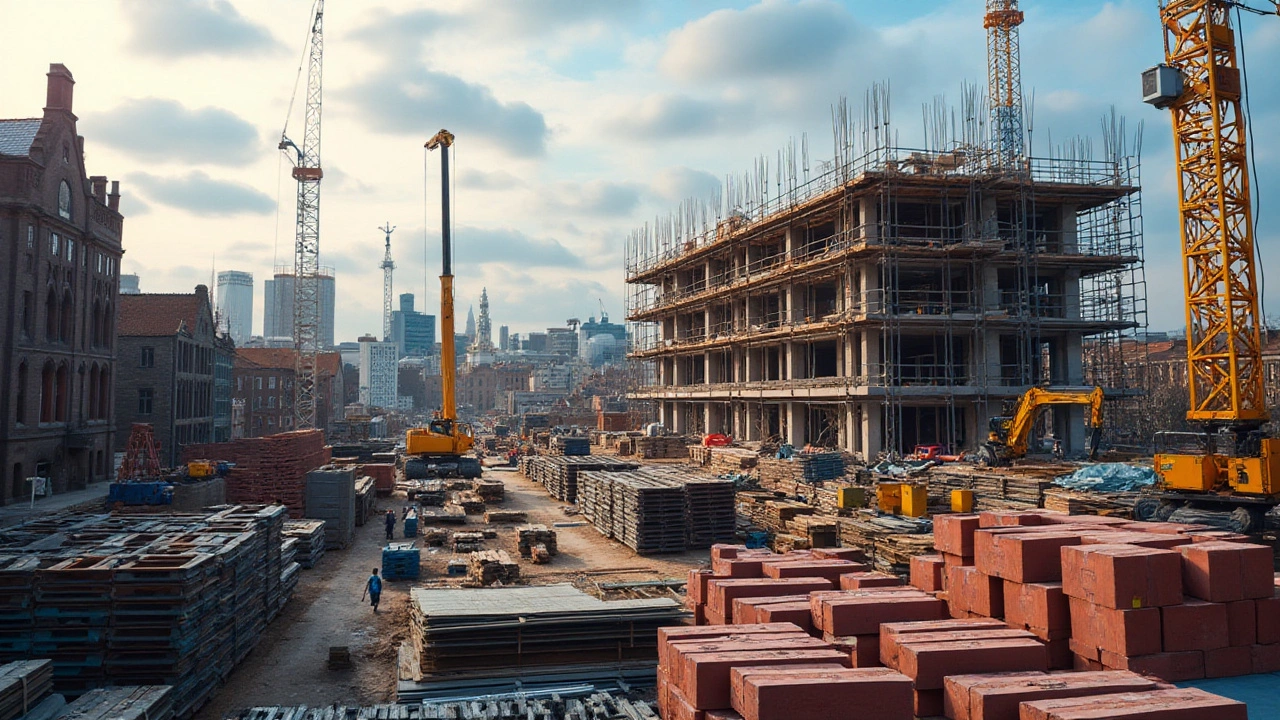Construction Materials List: Essential Picks for Every Building Project
When you start a build, the first thing you need is a solid list of materials. It’s not just about buying the cheapest stuff – you want items that fit the job, last long, and keep your budget in check. Below is a straightforward rundown of the core materials you’ll run into, plus quick advice on when and why to use each.
Core Building Materials You Can’t Skip
Concrete is the backbone of any structure. Whether you’re pouring a slab, footings, or a wall, pick the right mix for the load it will bear. A standard 30 MPa mix works for most residential floors, while higher‑strength mixes are better for garages or multi‑storey buildings.
Steel reinforcement gives concrete its tensile strength. Rebar comes in different diameters – 12 mm is common for small projects, but bigger beams may need 16 mm or more. Always check the builder’s guide for the spacing and tie‑wire requirements.
Timber remains a go‑to for framing, joists, and interior finishes. Softwoods like pine are cheap and easy to work with, while hardwoods such as oak provide extra durability for high‑traffic areas. Make sure the wood is kiln‑dried to avoid shrinkage later on.
Bricks and blocks form the walls that keep out the weather. For load‑bearing walls, use solid bricks or engineering blocks with high compressive strength. For internal partitions, lightweight blocks cut down on weight and speed up the build.
Insulation isn’t just about comfort; it’s a legal requirement in most UK builds. Mineral wool works well for walls and lofts, while rigid foam boards are great for flat roofs. Choose a product with a good R‑value for the climate you’re in.
Flooring & Finishing Materials for a Polished Look
Flooring choices can make or break a room’s vibe. Engineered hardwood gives the look of solid wood but is more stable on subfloors, especially over concrete. Luxury Vinyl Plank (LVP) mimics wood or stone, resists moisture, and is easier on the budget.
For bathrooms and kitchens, tiles are a safe bet. Porcelain offers high durability and low water absorption, while ceramic is cheaper and works well for decorative patterns. Always use a waterproof membrane under the tiles to protect the base layer.
When it comes to walls, drywall (plasterboard) speeds up the finish work. Choose moisture‑resistant boards for wet areas and fire‑rated boards for stairwells. A quick skim coat and a couple of coats of paint give a clean, fresh look.
Don’t forget the fasteners – screws, nails, and anchors. Using the right type for each material prevents loosening and saves you from costly repairs later. For timber, use wood screws; for masonry, use concrete anchors.
Lastly, a little planning goes a long way. Write down every item, note the quantity, and double‑check measurements before you order. Ordering a bit extra of key items like concrete and timber can avoid delays if you run short on site.
With this list in hand, you’ll have a clear roadmap for sourcing the right materials at the right time. It saves you from last‑minute trips to the depot, keeps the crew moving, and protects your budget. Ready to start your project? Grab this checklist, cross off each item as you get it, and watch your build come together smoothly.
Top 10 Essential Materials in Modern Construction
- Gavin Whitaker
- |
- |
- 0
In the dynamic world of construction, understanding the materials that form the backbone of the industry is crucial. This article highlights the ten most common materials used today, delving into specifics such as their properties, benefits, and applications. From traditional materials like wood and brick to modern innovations like engineered wood and recycled metals, this guide offers valuable insights for anyone involved in the building industry. By exploring these materials, readers can make informed choices that enhance durability, sustainability, and efficiency in construction projects.
View more